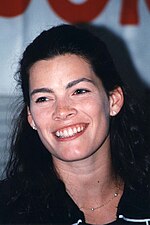
Nancy Kerrigan
American figure skater (born 1969)
Kenneth Angerwas an American underground experimental filmmaker, actor, and writer. Working exclusively in short films, he produced almost 40 works beginning in 1937, nine of which have been grouped together as the “Magick Lantern Cycle”.
Table of Contents
Kenneth Angerwas an American underground experimental filmmaker, actor, and writer. Working exclusively in short films, he produced almost 40 works beginning in 1937, nine of which have been grouped together as the “Magick Lantern Cycle”. Anger’s films variously merge surrealism with homoeroticism and the occult, and have been described as containing “elements of erotica, documentary, psychodrama, and spectacle”. He has been called “one of America’s first openly gay filmmakers”, with several films released before homosexuality was legalized in the U.S. Anger also explored occult themes in many of his films; he was fascinated by the English occultist Aleister Crowley and an adherent of Thelema, the religion Crowley founded.
Anger was born into a middle-class Presbyterian family in Santa Monica, California. He began making short films when he was 14 years old, although his first film to gain any recognition was the homoerotic Fireworksand Rabbit’s Moonand Lucifer Rising (1972). After failing to produce a sequel to Lucifer Rising, which he attempted through the mid-1980s, Anger retired from filmmaking, instead focusing on Hollywood Babylon II (1984). In the 2000s he returned to filmmaking, producing shorts for various film festivals and events.
Anger described filmmakers such as Auguste and Louis Lumiere, Georges Melies, and Maya Deren as influences, and has been cited as an important influence on directors like Martin Scorsese, David Lynch, and John Waters. Kinsey Today argued that Anger had “a profound impact on the work of many other filmmakers and artists, as well as on music video as an emergent art form using dream sequence, dance, fantasy, and narrative.”
Some very famous directors have started in the mail room, which is just getting inside the studio, getting to know people, getting to know the routine.
American filmmaker (1927-2023)
The music rights at the time cost me $12,000 in 1964 money, which is about double now or whatever. But I cleared everything. I had a lawyer in New York. And it was cleared for use in a short subject, not a feature.
American filmmaker (1927-2023)
I’ve made several films that haven’t been shown.
American filmmaker (1927-2023)
I have a problem with censorship by the lawyer – by legal people by the publishing firm, and I may be changing publishers. They don’t seem to want to take too many risks with living people.
American filmmaker (1927-2023)
I’ve never made a film using dialogue or speech.
American filmmaker (1927-2023)
Nobody in America, in the modern generation, has read their mythology or legends.
American filmmaker (1927-2023)